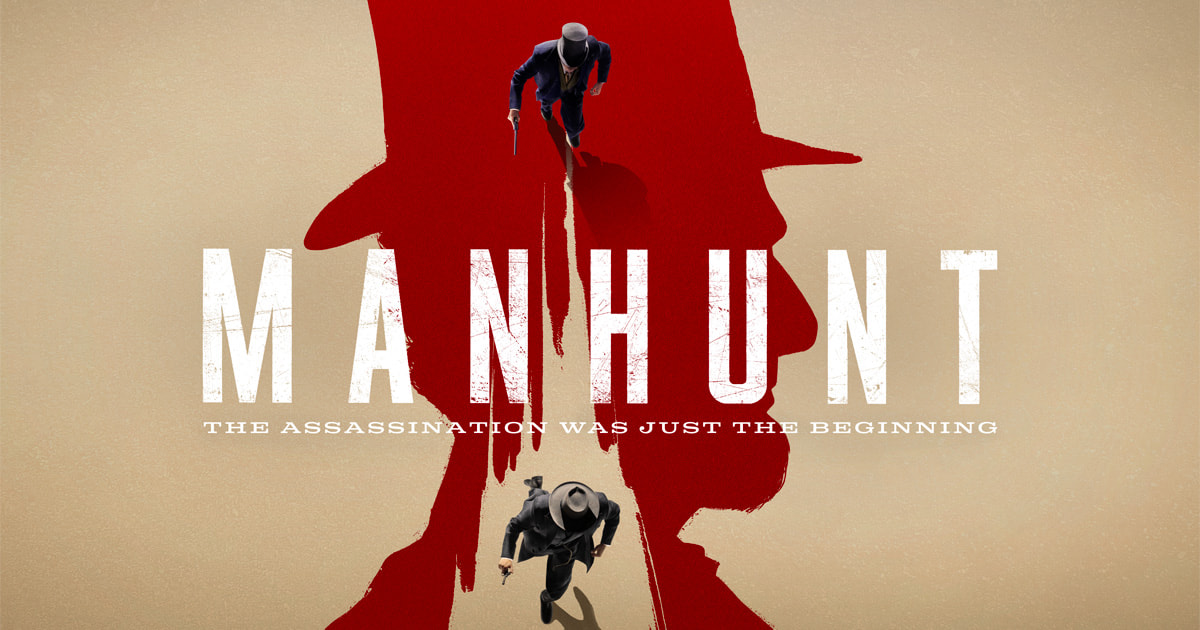James L. Swanson’s gripping history Manhunt: The 12-Day Chase for Lincoln’s Killer was one of the key books which inspired the Bowery Boys podcast in 2007.
The book was released the previous year, in 2006, and it has taken this long to finally get a screen adaptation — Manhunt on Apple TV+. The streamer seems to have become the go-to network for historical television shows, from Masters of the Air to the upcoming Franklin (with Michael Douglas as Benjamin Franklin).
We’ve gotten four episodes of Manhunt so far, and it’s a brisk and action-packed retelling of the search for John Wilkes Booth after the actor assassinated President Lincoln at Ford’s Theatre during a production of Our American Cousin.
In following multiple storylines, some historical details are understandably brushed by or left unexplained. Fortunately we’ve got a few podcasts in our back catalog that can serve as good companion listening to the series.
If you’re currently watching — or planning to — check out these past Bowery Boys episodes which discuss the people and events depicted on Manhunt:
Hoaxes and Conspiracies of 1864
The fourth episode of Manhunt features a depiction of the 1864 Confederate attack on Manhattan, a botched plan to burn the city. This podcast — the third part of our Civil War mini-series — describes how New York became so important to the Confederacy and untangles its complicated allegiences.
The Deadly Draft Riots of 1863
During the summer of 1863 the city erupted in a series of deadly riots over several days, initially sparked by an unfair draft system which sent working class immigrant men to the front lines, unable to buy their way out. The Draft Riots exposed the social and racial frictions of America.
New York and the Dawn of Photography
Mathew Brady not only photographed Abraham Lincoln in New York, but he also photographed Ford’s Theatre following the murder of the president. Brady’s story and his connection to Lincoln are featured in our show on the history of photography:
Edwin Booth and the Players Club
Edwin Booth was the greatest actor of the Gilded Age, a superstar of the theater who entertained millions over his long career. He was also the brother of John Wilkes Booth, and his brother’s infamy would follow Edwin through the rest of his life. But he did create a special haven for actors, located today on Gramercy Park:
Samuel Tilden and the Presidential Election of 1876
Next door to the Players Club is the National Arts Club and it too has a connection to this story. The bitter elction of 1876 — featuring the candidacy of Samuel Tilden who lived in this building — brought an end to Lincoln’s ambitious plans for Reconstruction.
The Moores: A Black Family in 1860s New York
Manhunt also depicts the lives of formerly enslaved people including Mary Simms, who recieves a plot of land from the government, allowing her to escape her slaver Doctor Samuel Mudd. (The series alters her story but adds more character and depth than the historical record allows.)
In our latest episode, Tom visits the Tenement Museum to look at the lives of two black New Yorkers during this period. While Joseph and Rachel Moore — subjects of the museum’s exhibiton “A Union of Hope: 1869” — were born free, their stories do connect with northern slavery of the past.
You also may like to read these past Bowery Boys articles with similar themes:
New York’s Poignant Memorial to Lincoln’s Death
Congressman Daniel Sickles shot and killed the son of Francis Scott Key
George Opdyke: The mayor during the Civil War Draft Riots

